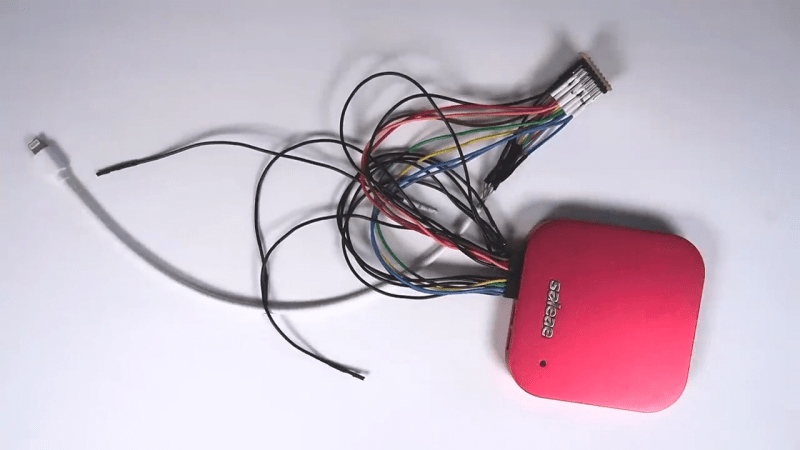A frequent contributor to the hacker community, [stacksmashing] has prepared an excellent instructional video on reverse engineering Apple’s Lighting connector proprietary protocol. The video begins by showing how to gain physical access to the signals and hooking them up to a logic analyzer. He then notes that the handshaking uses only a single signal and proposes that Apple isn’t going to re-invent the wheel (perhaps a risky assumption). Using a ChatGPT search, obligatory these days, we learn that Dallas Semiconductor / Microchip 1-wire is probably the protocol employed.
Which embedded single-wire busses exist that encode bits with different lengths of low and high signals?
At the basic level, 1-wire and protocols like Texas Instruments SDQ operate in a similar manner. It turns out that [stacksmashing] already wrote a SDQ analyzer module for the Saleae logic analyzer. Aided by this tool, he digs deeper and learns more about the kinds of messages and their contents. For example, upon being plugged in, the host system queries the accessory’s serial number, manufacturer, model number, and product description. Finally, he introduces the CRC reverse engineering tool reveng to determine which CRC polynomial and algorithm the protocol uses to frame each packet.
Even if you have no interest in Lightning cables, this video is a great tutorial on the types of things you need to do in order to make sense of an unknown communications protocol. Gather what information you can, make some educated guesses, observe the signals, revise your guesses, and repeat. In part two, [stacksmashing] will show how to build a homemade iPhone JTAG cable.
We wrote in more detail about cracking the Lightning interface back in 2015. The Lightning interface may have been a good solution in its day, foreshadowing some of the features we now have in USB-C. But its proprietary and closed nature meant it wasn’t used outside of the Apple ecosystem. With the proliferation and capabilities of USB-C, not to mention various legislative edicts, Lightning’s days seem numbered. Is the industry finally settling on one interface? Let us know your thoughts in the comments below.
















Can’t wait to hook up my Lightning AV adapter to my Linux box using things I learn from this video!
I made an Arduino to lightning connector that allowed me to interface serial commands to a raspberry pi. I really wish they would open up the protocol a bit more… what are they actually worried about? I mean… they do charge a lot for MFI certification…
Probably mostly worried about cheap dodgy devices and the kinda problems they’ve caused for USB-C. They’d have everyone wasting their time in the Apple Store trying to work out why knockoff HDMI adaptors don’t work.
This is an easier way to do what I did: https://redpark.com/lightning-serial-cable-l2-db9v/
nobody to RE the apple pencil, please ?
As bad as the lightning is for being a proprietary interface, I still prefer its mechanical properties to the fragile USB-C.
lightning isn’t anything more than a switch that locks USB and serial interfaces behind a proprietary lock down. If Apple had admitted that it was just USB with a more robust micro connector, and not pretended that it was faster than USB, they could have probably licensed the connector out and made a lot more money. But their draconian business strategy got in the way of even better profits.